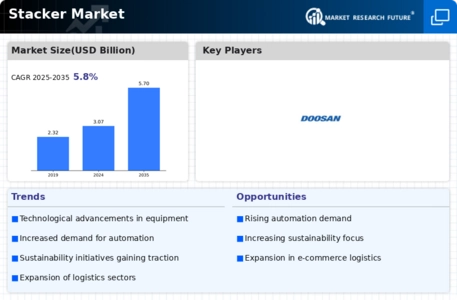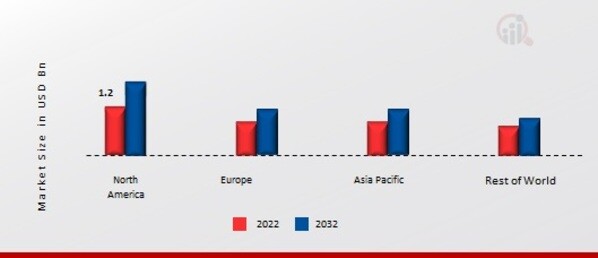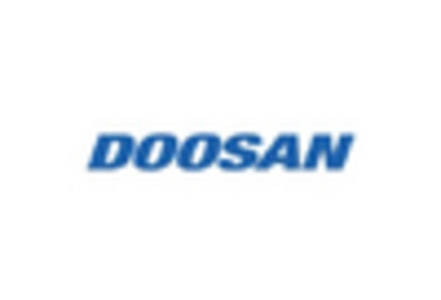Market Analysis
In-depth Analysis of Stacker Market Industry Landscape
The stacker market operates within a dynamic framework influenced by various factors that impact supply, demand, and pricing dynamics. Stackers, also known as stacker cranes or stacker trucks, are material handling equipment used in warehouses, distribution centers, and manufacturing facilities for stacking and retrieving palletized goods. Understanding the market dynamics of stackers involves analyzing key elements such as technological advancements, industry trends, regulatory policies, end-user preferences, and competitive forces.
Technological advancements drive innovation and efficiency improvements in the stacker market. Manufacturers continually invest in research and development to enhance stacker design, performance, and functionality. Advancements in automation, robotics, and sensor technologies have led to the development of stackers with improved speed, accuracy, and safety features. For example, automated guided vehicles (AGVs) and robotic stackers equipped with advanced navigation systems can navigate warehouse aisles autonomously, optimizing material flow and reducing labor costs. Moreover, integration with warehouse management systems (WMS) and real-time data analytics enables stackers to operate more efficiently, responding dynamically to changes in inventory levels and demand patterns.
Industry trends shape market dynamics by influencing demand patterns and adoption rates for stacker equipment. The rise of e-commerce and omnichannel retailing has driven demand for stackers in fulfillment centers and distribution warehouses. The growing emphasis on supply chain optimization, inventory management, and order fulfillment efficiency further fuels demand for stackers capable of handling diverse product SKUs and increasing throughput rates. Moreover, sustainability initiatives and energy efficiency concerns drive demand for eco-friendly stackers with reduced carbon emissions and energy consumption, aligning with corporate sustainability goals and regulatory mandates.
Regulatory policies and safety regulations play a crucial role in shaping the dynamics of the stacker market. Occupational health and safety regulations mandate strict safety standards for stacker operation, including training requirements, maintenance protocols, and equipment inspections. Compliance with regulatory requirements is essential for stacker manufacturers and end-users to ensure workplace safety, mitigate liability risks, and avoid costly fines or penalties. Additionally, environmental regulations such as emissions standards and noise regulations influence product design and manufacturing practices, driving innovation in eco-friendly stacker technologies.
End-user preferences and purchasing behaviors are key determinants of market dynamics in the stacker industry. Customers seek stackers that offer reliability, durability, and ease of operation, along with features such as ergonomic controls, adjustable forks, and customizable configurations. Factors such as total cost of ownership, return on investment, and aftermarket support also influence purchasing decisions. Companies that offer comprehensive service contracts, spare parts availability, and training programs can differentiate themselves and gain a competitive edge in the stacker market.
Competitive forces shape market dynamics by influencing pricing strategies, product differentiation, and market share. The stacker market is characterized by a diverse array of players, including multinational corporations, regional manufacturers, and niche suppliers. Intense competition prevails due to factors such as product quality, technological innovation, and customer service. Companies compete for market share by offering a range of stacker models tailored to specific application requirements, as well as value-added services such as leasing options, financing programs, and aftermarket support. Moreover, strategic partnerships, mergers, and acquisitions enable companies to expand their product portfolios and geographic presence, enhancing competitiveness in the global stacker market.


 Source: Secondary Research, Primary Research, Market Research Future Database and Analyst Review
Source: Secondary Research, Primary Research, Market Research Future Database and Analyst Review

Leave a Comment